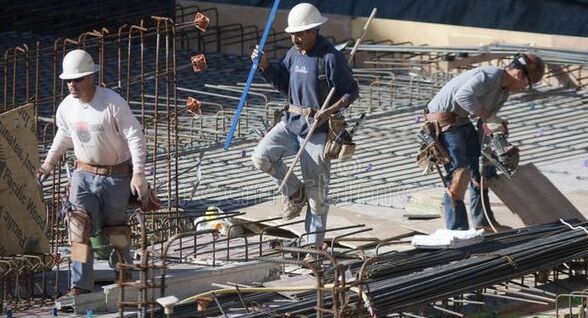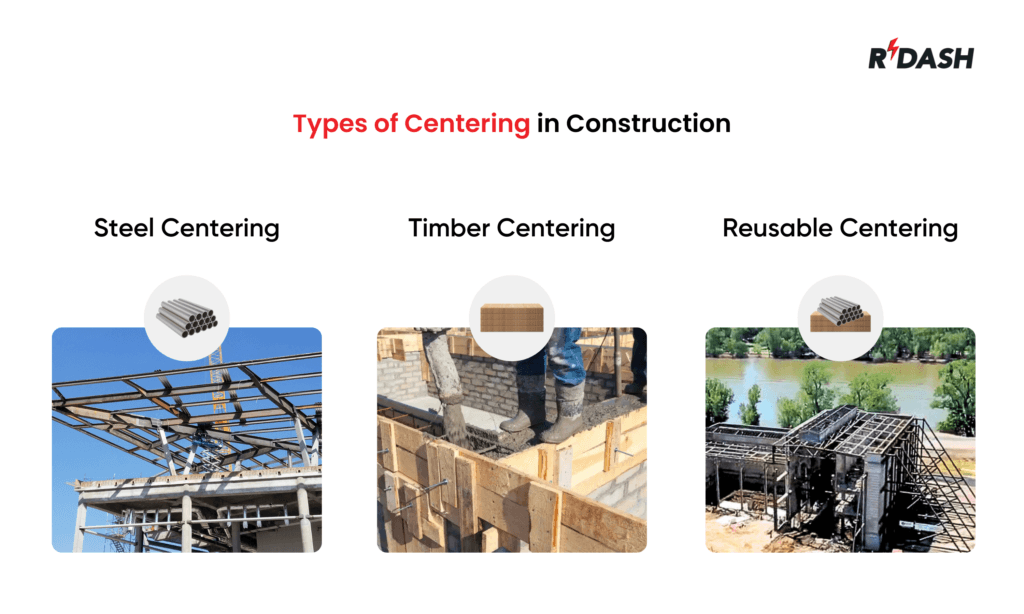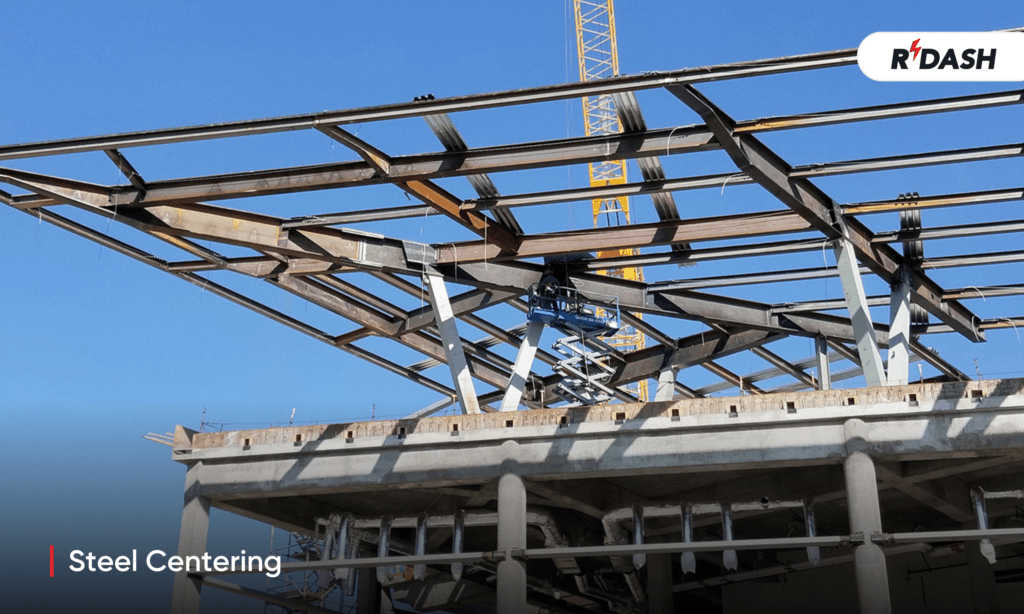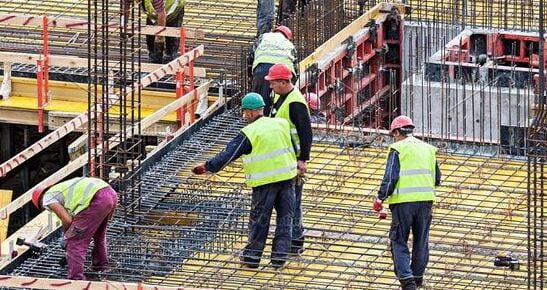Centering work in construction focuses on grounding oneself in activities that align with personal values and project goals. In a fast-paced industry with demanding schedules and high-pressure environments, taking time to center one’s work may seem difficult, but it is crucial for improving productivity, well-being, and project outcomes. By concentrating on meaningful tasks and aligning them with core values, construction professionals can manage deadlines and demands more effectively. This blog explores the importance of centering work in construction, its impact on productivity and well-being, and practical strategies for incorporating this approach into busy schedules.

Understanding Centering Work in Construction
In construction, centering work takes on a unique significance, encompassing activities that promote focus, mindfulness, and alignment with project objectives. While the nature of construction work often involves physical labor and logistical challenges, centering work goes beyond the tangible tasks to encompass the mental and emotional aspects of the job. Here’s how centering work manifests in the construction industry:

- Mindful Planning and Execution: Centering work begins with mindful planning and execution of construction projects. This involves taking the time to assess project requirements, anticipate potential challenges, and develop strategic solutions. By approaching tasks with a clear and focused mindset, construction professionals can minimize errors, optimize efficiency, and ensure project success.
- Alignment with Safety Practices: Safety is paramount in the construction industry, and centering work includes a strong emphasis on safety practices and protocols. This involves promoting a culture of safety awareness, providing ongoing training and education, and empowering workers to prioritize their well-being on the job site. When safety is ingrained in the mindset of construction teams, accidents and injuries can be significantly reduced.
- Collaborative Communication: Effective communication is essential for success in construction projects, and centering work emphasizes collaborative communication among project stakeholders. This includes regular meetings, clear documentation of project plans and updates, and open channels for feedback and discussion. When everyone is on the same page and working towards common goals, projects run more smoothly and efficiently.
- Continuous Learning and Improvement: Centering work encourages a mindset of continuous learning and improvement within the construction industry. This involves staying abreast of new technologies, industry trends, and best practices, as well as seeking feedback from peers and mentors. By embracing a growth mindset, construction professionals can adapt to changing circumstances, overcome challenges, and excel in their careers.
Benefits of Centering Work in Construction
Construction, a cornerstone of human development, has been evolving for centuries. From the pyramids of Egypt to the skyscrapers of New York City, the industry has continually adapted and improved. One of the most significant advancements in modern construction techniques is the concept of centering work. This method not only enhances efficiency but also ensures the safety and precision of the projects. In this blog, we will delve into the myriad benefits of centering work in construction and why it is pivotal for contemporary building practices.

- Enhanced Structural Integrity: One of the primary benefits of centering work is the enhanced structural integrity it provides. By ensuring that the concrete is supported properly as it cures, centering work helps in maintaining the correct shape and alignment of the structure. This leads to buildings and other constructions that are not only aesthetically pleasing but also robust and long-lasting. Properly executed centering work minimizes the risk of structural failures, which can be catastrophic and costly.
- Increased precision and Quality: Centering work allows for greater precision in the construction process. When forms are used correctly, they provide a guide that ensures the concrete is poured and set in the exact dimensions required. This precision is essential for complex architectural designs and engineering projects where even minor deviations can lead to significant issues. The quality of the finished structure is directly related to the accuracy of the centering work, making it an indispensable part of high-quality construction.
- Improved Safety: Safety is paramount in any construction project. Centering work significantly contributes to a safer construction environment. By providing a stable platform and support system, it reduces the likelihood of accidents caused by structural collapses during the curing phase of concrete. Additionally, well-designed formwork minimizes the risk to workers, who can operate in a more secure and controlled environment. This reduction in workplace accidents not only protects lives but also decreases project delays and potential legal liabilities.
- Cost Efficiency: While centering work requires an initial investment in materials and labor, it often leads to overall cost savings. The precision and stability it provides can reduce the amount of rework required due to errors or structural failures. Additionally, many modern formwork systems are reusable, which further cuts costs on subsequent projects. By improving the efficiency of the construction process, centering work helps in completing projects on time and within budget, making it a cost-effective solution in the long run.
- Flexibility and Adaptability: Modern centering systems are incredibly flexible and adaptable. They can be customized to fit a wide range of architectural and engineering designs, from simple residential buildings to complex commercial structures. This adaptability makes them suitable for a variety of projects, ensuring that construction companies can meet the diverse needs of their clients. The ability to adjust and reuse centering systems also contributes to more sustainable building practices, reducing waste and promoting environmental responsibility.
- Time Efficiency: Centering work can significantly speed up the construction process. By providing a reliable framework for concrete pouring, it allows for continuous work without the need for lengthy pauses to correct errors or deal with structural issues. This efficiency is particularly valuable in large-scale projects where time is a critical factor. Faster completion times not only save money but also allow for quicker occupancy and use of the finished structure, benefiting both builders and clients.
- Environmental Benefits: Sustainability is becoming increasingly important in the construction industry. Centering work, particularly when using modern, reusable formwork systems, can contribute to more environmentally friendly building practices. Reusable formwork reduces the need for raw materials and minimizes waste. Additionally, precise centering work can improve the energy efficiency of the finished structure, leading to lower energy consumption over its lifetime. These environmental benefits are crucial in a world where reducing our carbon footprint is more important than ever.
- Innovation and Technological Advancement: The field of centering work is continually evolving, with new technologies and materials being developed to improve efficiency and outcomes. Innovations such as adjustable formwork, lightweight materials, and advanced design software are making centering work more effective and accessible. These advancements not only enhance the quality and safety of construction projects but also drive the industry forward, promoting continuous improvement and growth.
- Real-World Applications and Success Stories: To illustrate the benefits of centering work, let’s look at some real-world examples. The construction of the Burj Khalifa, the world’s tallest building, relied heavily on advanced centering techniques to achieve its remarkable height and stability. Similarly, the construction of large-scale infrastructure projects like the Panama Canal expansion utilized centering work to ensure the precision and durability required for such monumental tasks.
Different Types of Centering in Construction
Centering plays a crucial role in construction, particularly when it comes to creating structures that are not only sturdy but also accurately shaped. Here’s a closer look at the various types of centering used in the construction industry:

- Timber Centering: Timber centering is one of the oldest and most traditional forms of centering. It uses wooden beams and planks that are easily shaped and fitted onsite. Ideal for its ease of handling and versatility, timber centering is especially popular in smaller projects or in areas where wood is readily available.
- Reusable Centering: As the name suggests, reusable centering is designed to be used multiple times, making it a cost-effective option. This type of centering is typically made from materials like plastic or metal that can withstand repeated use without significant wear and tear. It’s a favorite in large construction projects where the same molds are needed repeatedly.
- Steel Centering: Known for its strength and durability, steel centering is used in projects that require robust support structures. Steel is less flexible than wood, but its ability to support heavy loads makes it invaluable for industrial and commercial constructions.

Differences between Formwork, Shuttering, and Centering
While often used interchangeably in the construction industry, the terms formwork, shuttering, and centering refer to different aspects of the mold or form used to pour concrete.
- Formwork: This is the overall term used for the temporary or permanent molds into which concrete is poured. Formwork includes the complete setup – panels, supports, and all – needed to shape and support concrete until it hardens.
- Shuttering: Shuttering specifically refers to the method of creating the molds using rigid materials. The term is often used interchangeably with formwork but technically, it focuses more on the panels made of wood, metal, or plastic that hold the wet concrete in place.
- Centering: Centering specifically refers to the support system for the formwork, especially in arches and domes where the weight of the unset concrete needs a strong guide until it sets. It’s a critical component in ensuring the stability and alignment of the formwork.
Practical Strategies for Centering Work in Construction

1. Careful Planning and Design
Effective centering work begins with meticulous planning and design. Consider the following steps:
- Assessment of Requirements: Understand the specific needs of the project, including the type of structure, load requirements, and environmental conditions.
- Detailed Drawings and Models: Create detailed drawings and 3D models to visualize the formwork. Modern software tools like AutoCAD and Revit can help in designing precise and efficient formwork systems.
- Load Calculations: Perform accurate load calculations to ensure the formwork can withstand the pressure of the concrete during pouring and curing.
- Selection of Materials: Choose the appropriate materials for the formwork. For instance, steel formwork is durable and reusable, while timber is versatile and easier to handle for smaller projects.
2. Employing Advanced Formwork Systems
Advancements in formwork technology have introduced several efficient systems that can be employed to improve centering work:
- Modular Formwork Systems: These systems consist of prefabricated modules that can be quickly assembled and disassembled, saving time and labor costs. They are highly flexible and can be adapted to various shapes and sizes.
- Aluminum Formwork: Lightweight yet strong, aluminum formwork systems are easy to handle and reduce the overall construction time. They also offer a smooth finish, reducing the need for additional plastering.
- Self-Climbing Formwork: Ideal for high-rise buildings, self-climbing formwork systems use hydraulic jacks to move the formwork to the next level. This system enhances safety and efficiency in vertical construction projects.
- Plastic Formwork: Durable and reusable, plastic formwork is resistant to moisture and chemicals, making it suitable for various construction environments. It is also lightweight, reducing labor strain.
3. Ensuring Quality Control and Safety
Quality control and safety are paramount in centering work. Implement the following practices to maintain high standards:
- Regular Inspections: Conduct regular inspections of the formwork to check for any defects, misalignments, or damage. This ensures that any issues are identified and rectified promptly.
- Use of Proper Tools and Equipment: Equip workers with the necessary tools and equipment to handle formwork safely and efficiently. This includes proper lifting gear, safety harnesses, and protective clothing.
- Training and Certification: Ensure that all personnel involved in centering work are adequately trained and certified. Regular training sessions on safety protocols and best practices can help prevent accidents and improve the quality of work.
- Monitoring Concrete Pouring: During the concrete pouring process, monitor the formwork to ensure it remains stable and intact. This helps prevent blowouts and other issues that can compromise the structural integrity.
4. Incorporating Sustainability Practices
Sustainability is increasingly important in construction. Integrate sustainable practices into your centering work:
- Reusable Formwork Systems: Opt for formwork systems that can be reused multiple times. This reduces waste and lowers the environmental impact of the project.
- Eco-Friendly Materials: Use formwork materials that are environmentally friendly and have a lower carbon footprint. For example, timber sourced from sustainable forests or recycled plastic formwork.
- Efficient Material Usage: Plan the formwork design to minimize material wastage. Accurate cutting and assembly reduce the amount of offcuts and discarded materials.
- Energy-Efficient Processes: Implement energy-efficient processes in the construction site, such as using electric or hybrid equipment for formwork assembly and disassembly.
5. Leveraging Technology and Innovation
Technology plays a crucial role in enhancing the efficiency and effectiveness of centering work. Here’s how to leverage it:
- Building Information Modeling (BIM): Utilize BIM to create detailed 3D models of the formwork and the entire construction project. BIM helps identify potential issues before construction begins, saving time and resources.
- Drones for Inspection: Use drones to inspect large or complex formwork structures. Drones can access hard-to-reach areas and provide detailed imagery, making it easier to identify and address issues.
- 3D Printing: Explore the use of 3D printing to create custom formwork components. This can be particularly useful for complex shapes and intricate designs, offering precision and reducing material waste.
- Automated Formwork Systems: Implement automated systems for assembling and disassembling formwork. Automation reduces labor costs and improves safety by minimizing the need for manual handling.
6. Collaboration and Communication
Effective collaboration and communication among all stakeholders are essential for successful centering work:
- Interdisciplinary Teams: Form interdisciplinary teams that include engineers, architects, and construction workers. Collaborative planning ensures that all aspects of the project are considered.
- Clear Communication Channels: Establish clear communication channels to keep all stakeholders informed about the progress and any changes in the project. Regular meetings and updates help align everyone’s efforts.
- Feedback Mechanisms: Implement feedback mechanisms to gather input from workers on the ground. Their insights can help identify practical improvements and innovations in the formwork process.

Conclusion
In the fast-paced world of construction, centering work offers a pathway to balance, productivity, and well-being. By fostering mindfulness, alignment with project objectives, and a culture of safety and collaboration, construction professionals can achieve greater success and satisfaction in their work. Incorporating practical strategies such as mindful planning, collaborative communication, and self-care into daily routines helps construction teams thrive amidst the demands of their industry. Ultimately, by prioritizing centering work, construction professionals can build not only structures but also a fulfilling and sustainable career in the construction industry.






